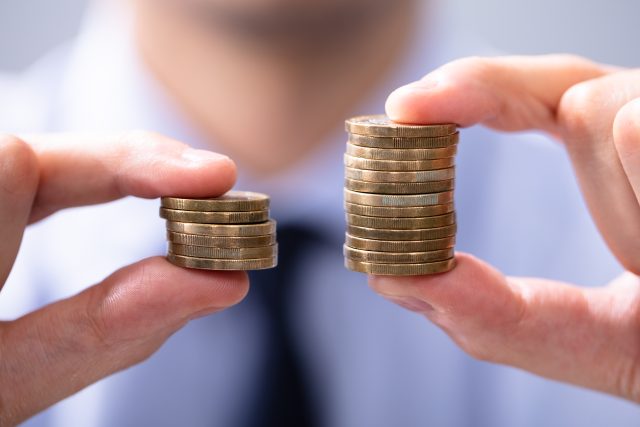This website uses cookies so that we can provide you with the best user experience possible. Cookie information is stored in your browser and performs functions such as recognising you when you return to our website and helping our team to understand which sections of the website you find most interesting and useful.
Where do you fall in ‘the great drinks divide’?
Consumers are being pushed to extreme opposite ends of the spending scale, buying either cheaper beer or pricier wine and spirits, say analysts.

Inflation is having a polarising effect on drinks sales, with lower-income buyers seeking cheaper beer while more affluent consumers are levelling up to buy more premium wines and spirits as a way of treating themselves amidst the cost-of-living crisis.
According to analysts from New York firm Cowen, craft brews and ‘above premium’ beers saw their “slowest growth for years” during 2022, while cheaper beers picked up market share. Analysts further noted that beer prices have increased more than prices of other alcoholic beverages, which could be a contributing factor.
“Beer has an outsized preference among lower-income consumers, which we believe has led to a deceleration in the multiyear premiumisation trend seen in the category,” said Vivien Azer at Cowen.
This time last year, Heineken predicted a 15% climb in beer prices due to the rising cost of ingredients, energy and transport, and warned that it could lead to lower beer consumption, though Cowen’s latest report suggests this is only the case for more premium priced brews. The relatively affordable Busch Light, for example, is one beer brand that has seen sales spike.
“In my 24 years in the business I’ve never seen anything like it, not even close,” Dolf van den Brink, the brewer’s chief executive told the Financial Times. “Across the board we are faced with crazy increases. There’s no model that can handle this kind of inflation. It’s kind of off the charts.”
In November 2022, Heineken, which owns popular brands such as John Smith, Fosters, Amstel and Kronenbourg, announced it would be bumping up the price per keg by 15.8% from 16 January 2023.
At the other end of the consumer income spectrum, high-end whiskies and Tequilas saw strong growth last year, as did wines priced at more than US$20.
This week, spirits giant Diageo revealed in its interim year report that its “super-premium-plus” brands had grown in organic net sales by 12%. Similarly, its “premium-plus” brands drove 65% of organic net sales growth.
So why are people buying more expensive wine but cheaper beer? Compared with beer, wine producers have largely held off on raising their prices, and seem more inclined to swallow overheads rather than risk losing customers over the long term.
The success of the US$20+ wine sector may also be down to the age of the average wine consumer. The 2023 Silicon Valley Bank report revealed that the only age bracket that saw growth in terms of wine consumption in the US was the over 60s. Given that older consumers tend to have more liquid cash to spend on luxuries such as wine, this may account for the stability of premium wine sales.
“The divergence between lower price and higher price drinks has never been wider,” said Rob McMillan, head of Silicon Valley Bank’s wine division. “We really have two different industries now.”
Related news
The Big Interview: Sebastián Tramón

